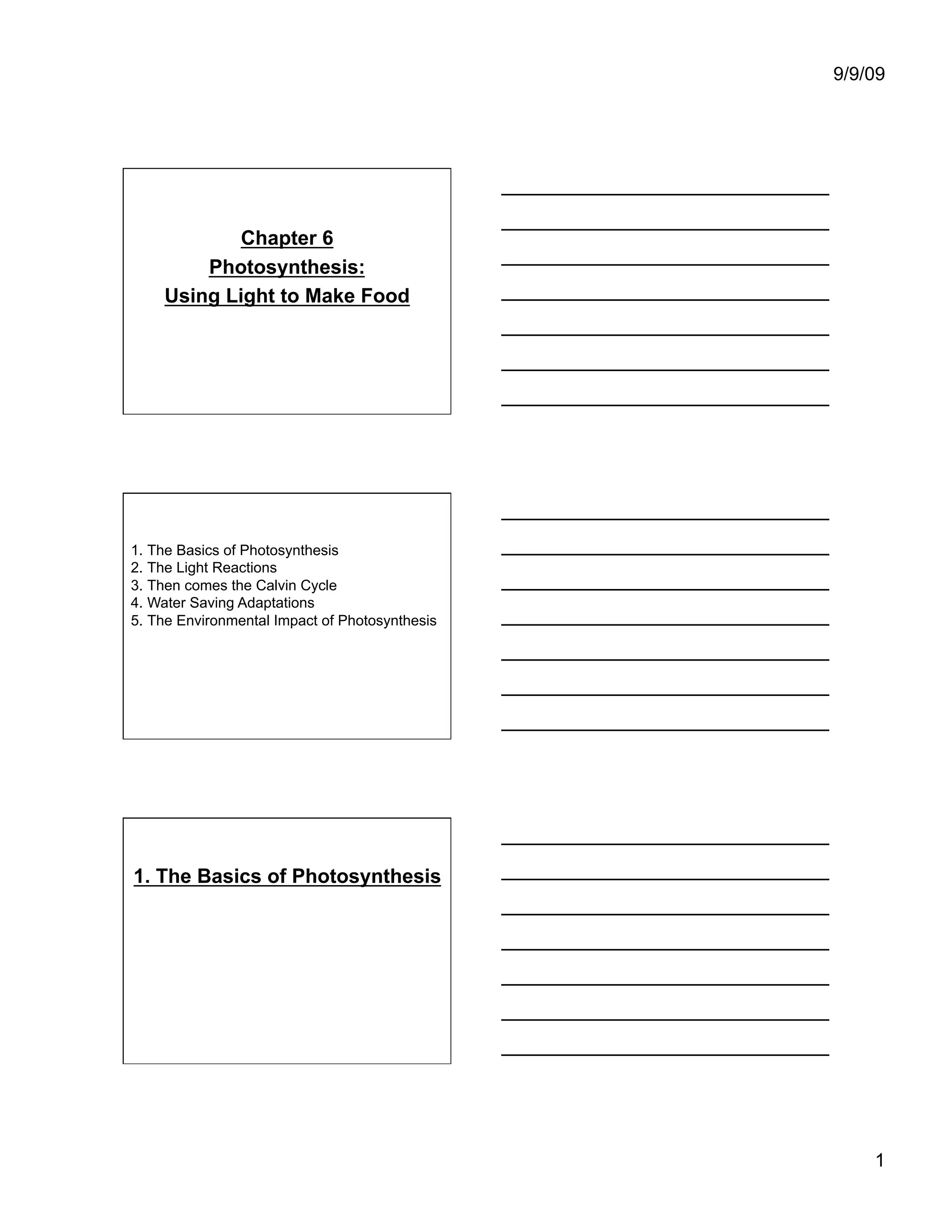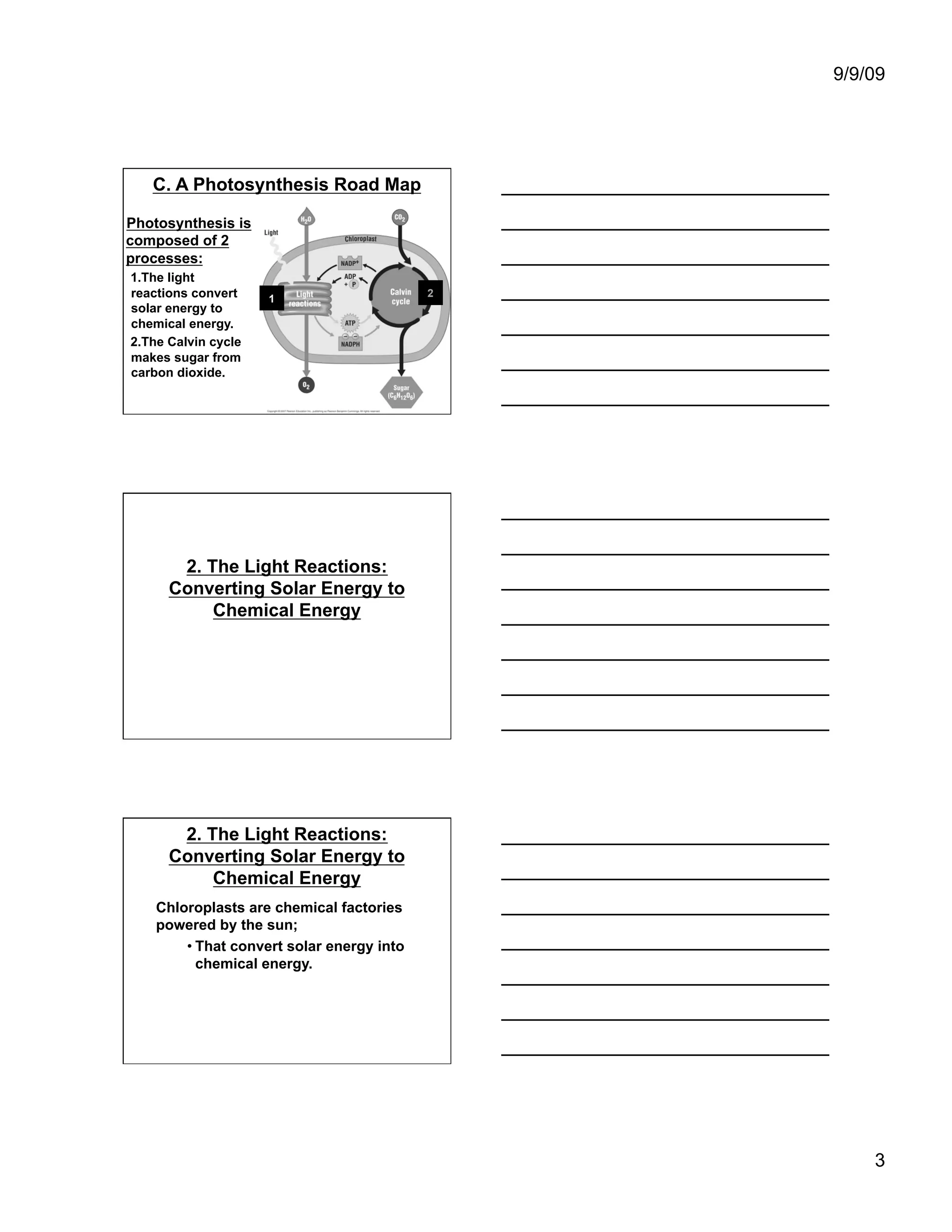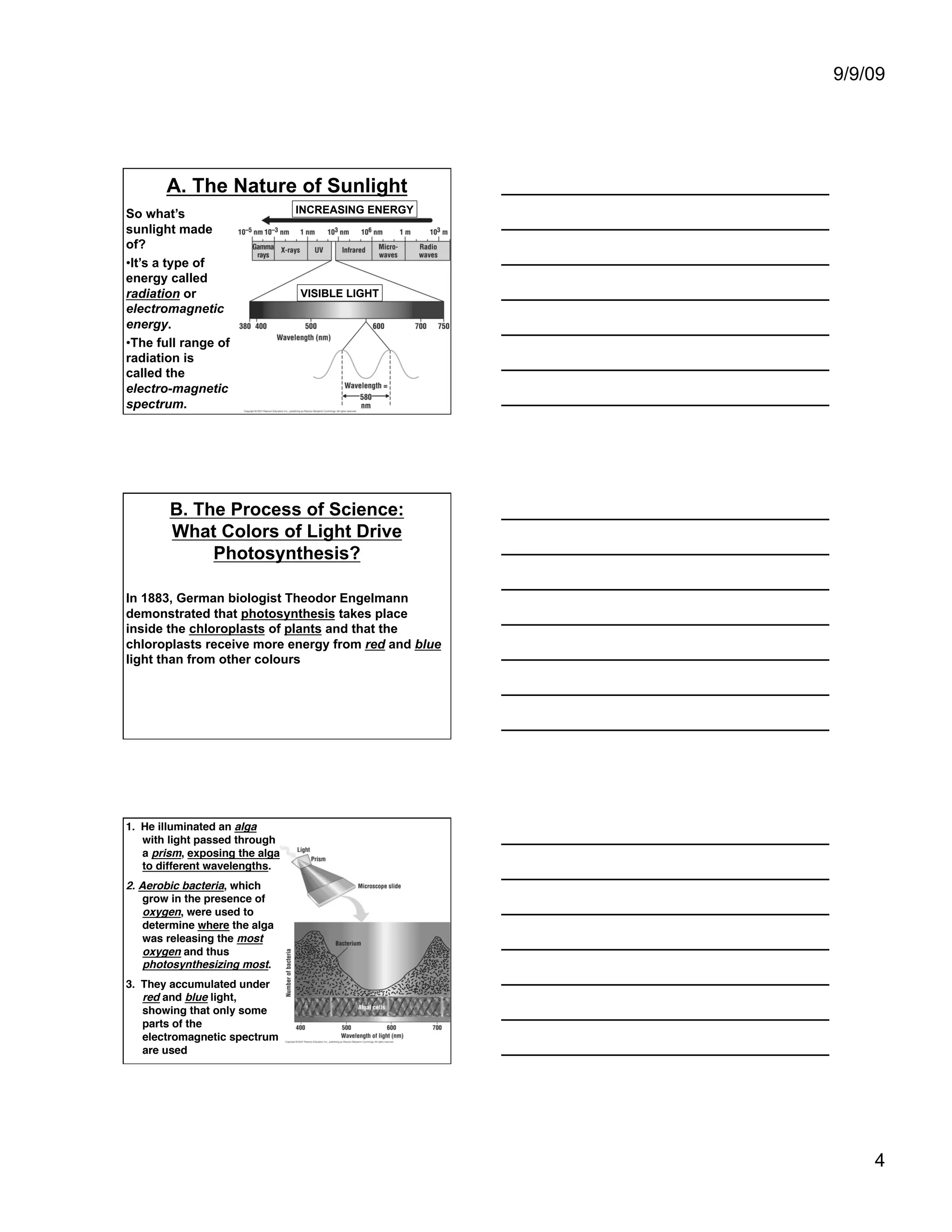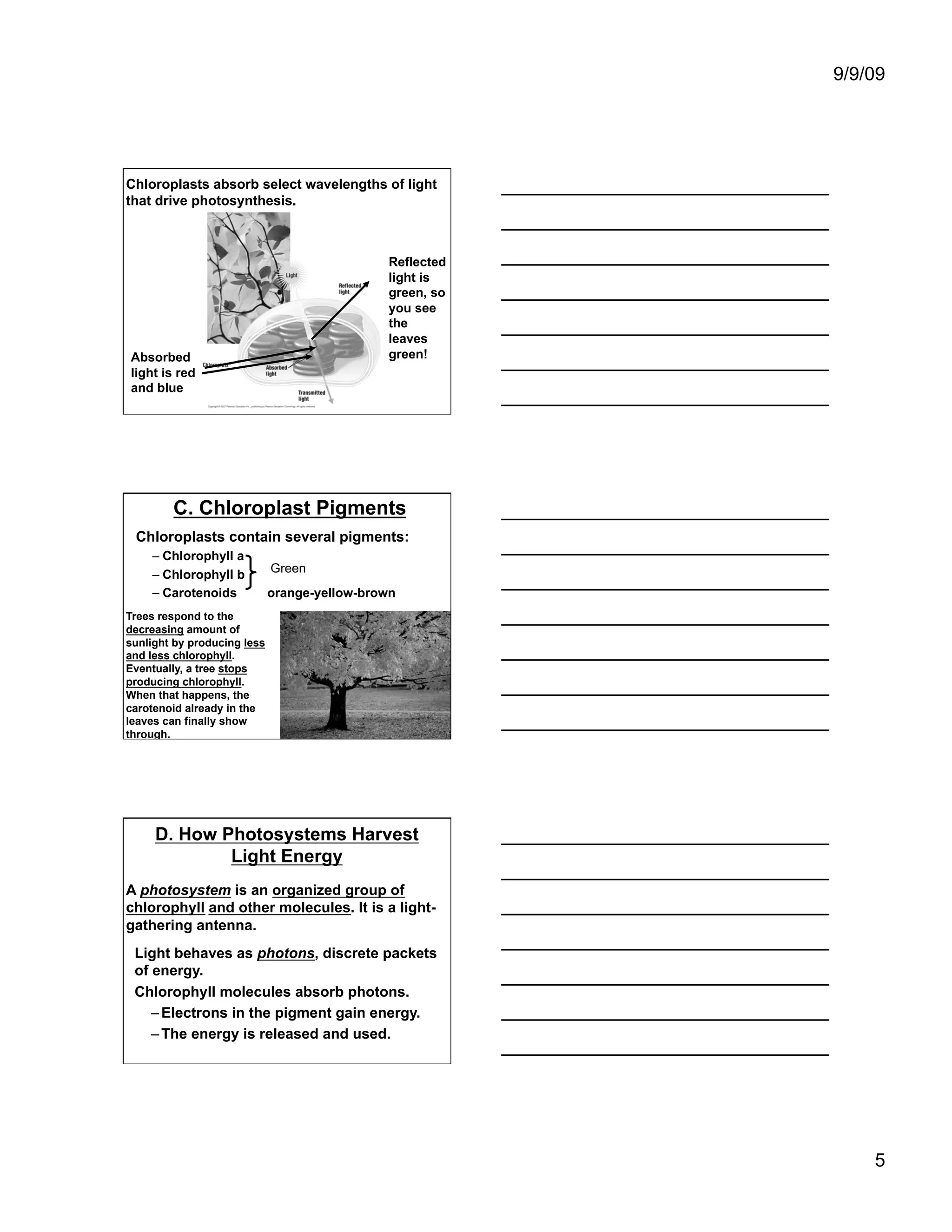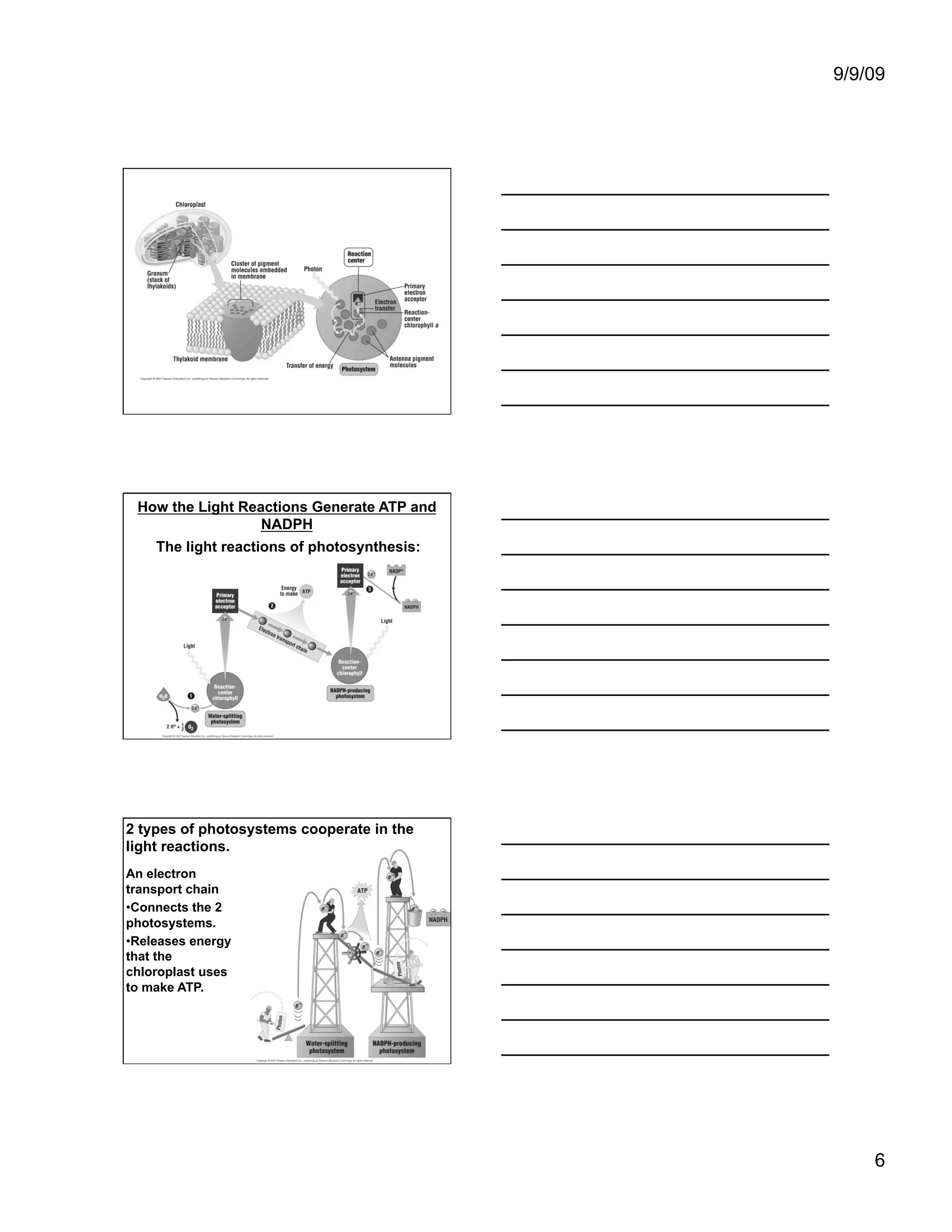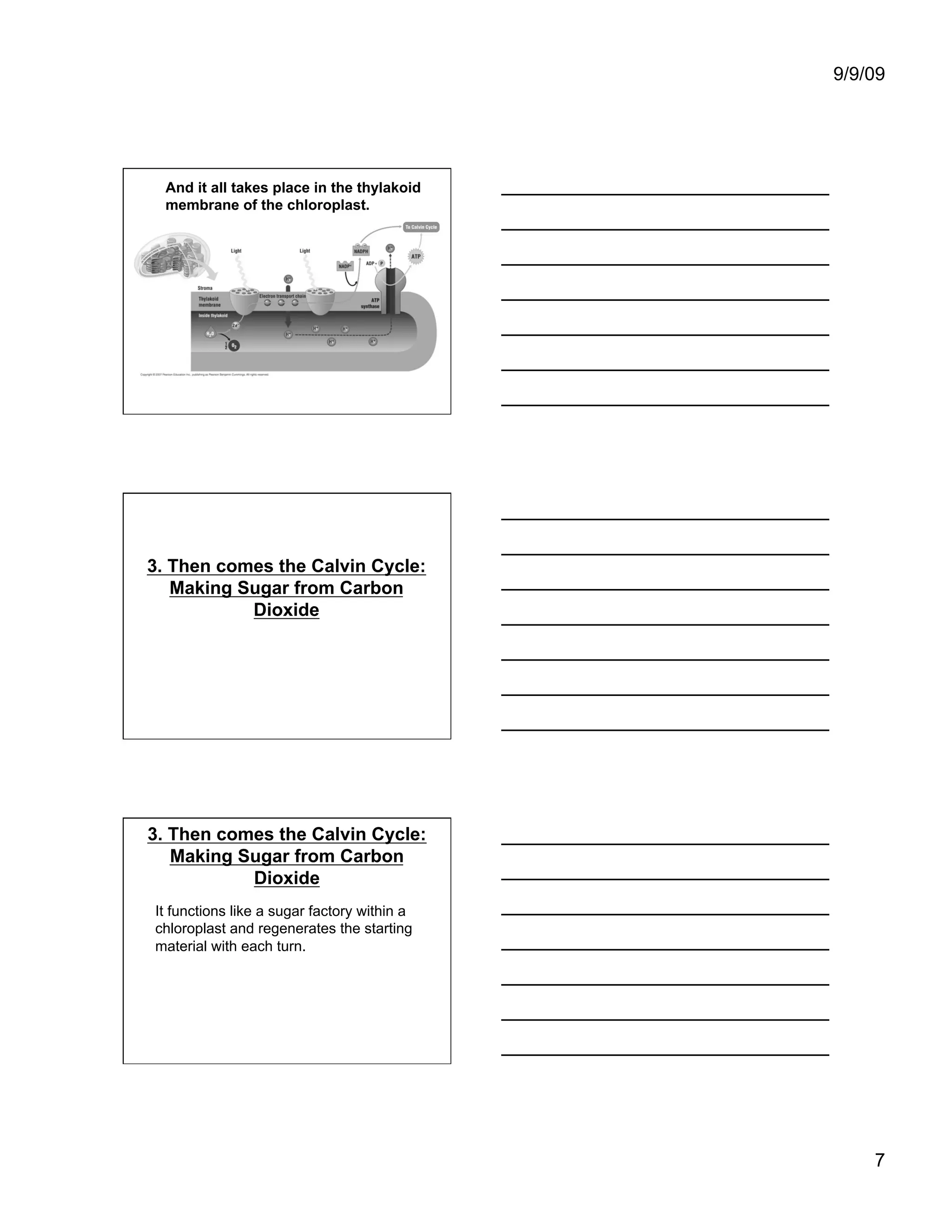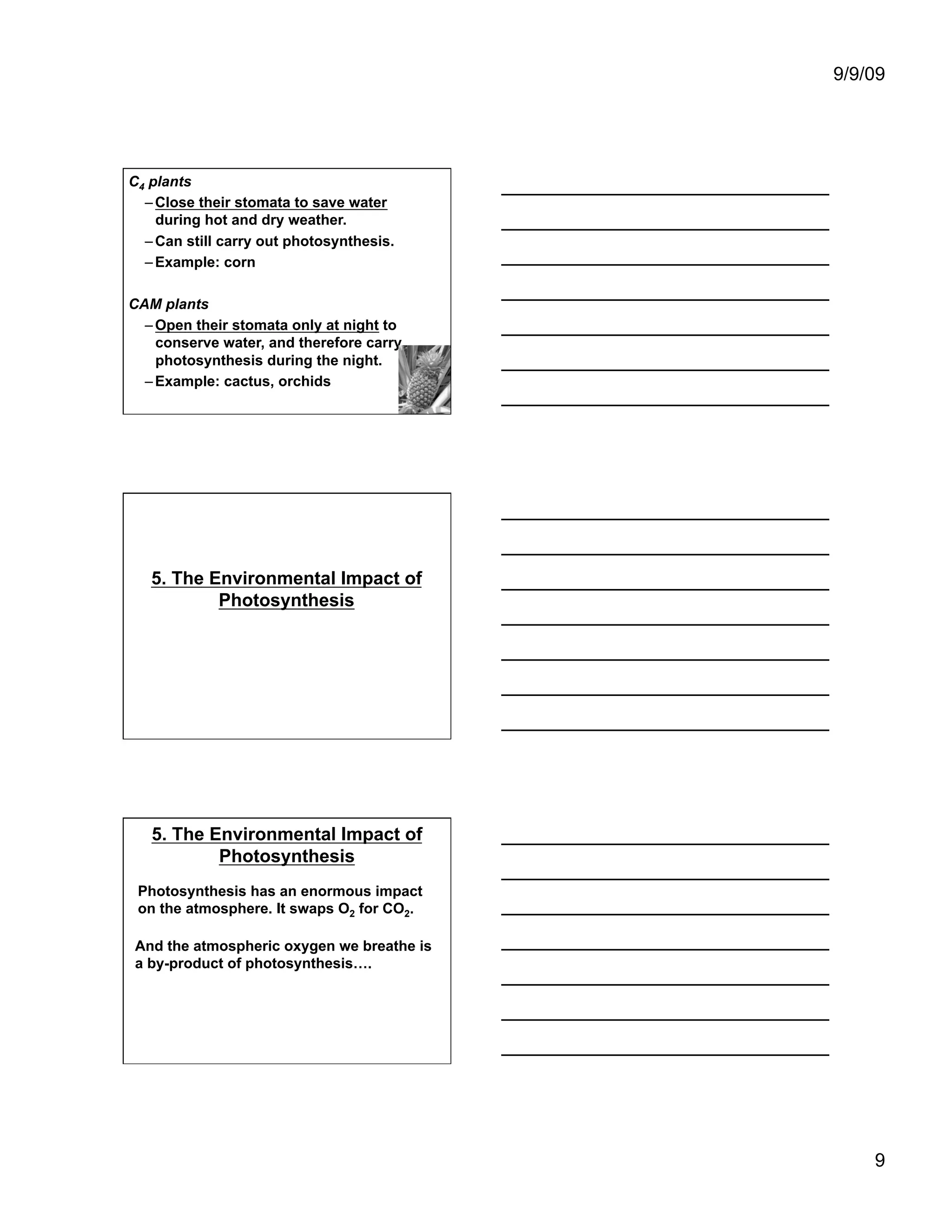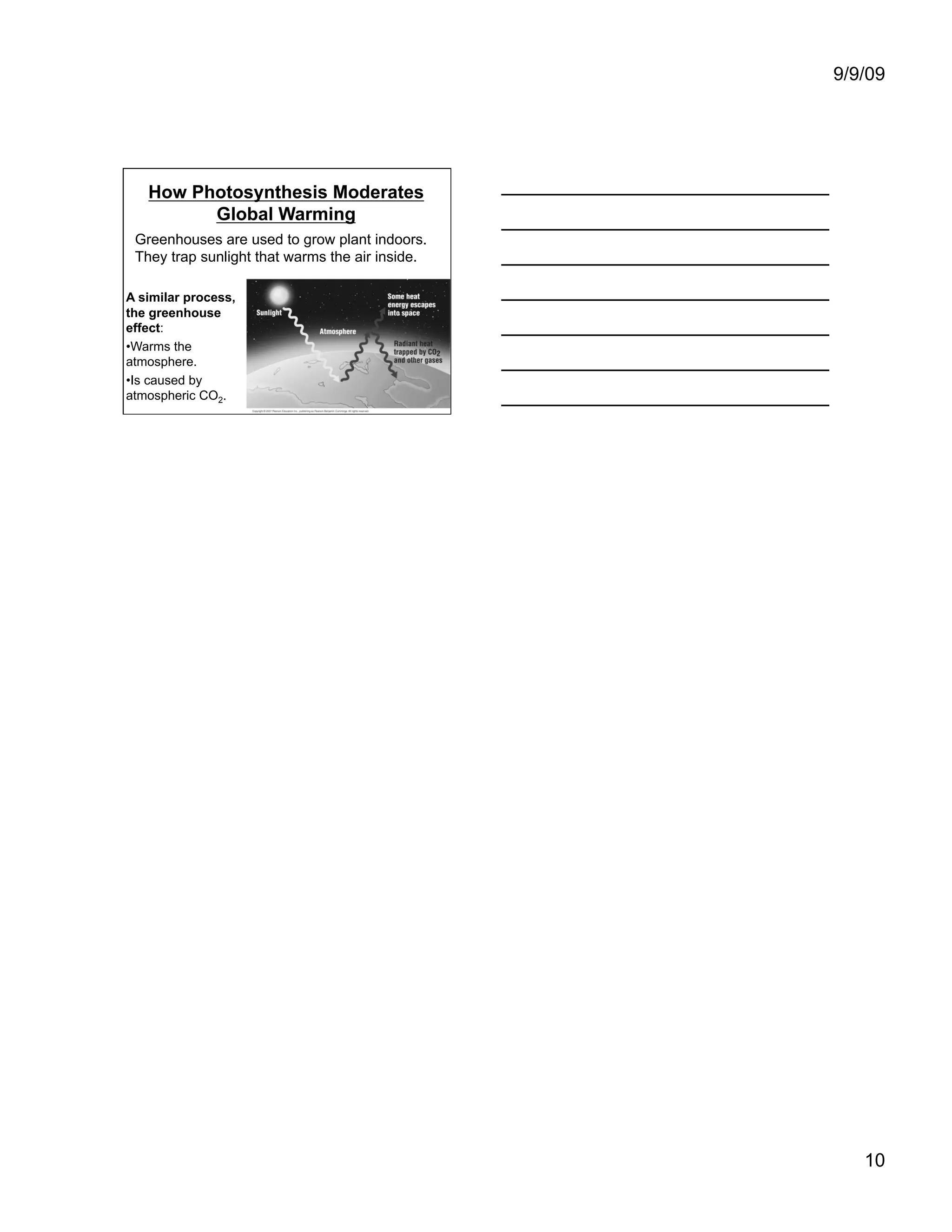1. Photosynthesis is the process by which plants use energy from sunlight to produce sugar. It occurs in chloroplasts, which contain chlorophyll and absorb light energy.
2. The light reactions convert solar energy to chemical energy in the form of ATP and NADPH. Chlorophyll absorbs light, with wavelengths in the red and blue parts of the spectrum driving photosynthesis most.
3. The Calvin cycle then uses the ATP and NADPH to convert carbon dioxide into sugars like glucose.
